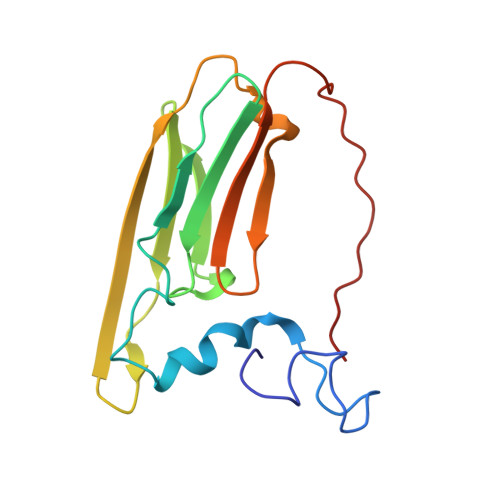The permanently chaperone-active small heat shock protein Hsp17 from Caenorhabditis elegans exhibits topological separation of its N-terminal regions.
Strauch, A., Rossa, B., Kohler, F., Haeussler, S., Muhlhofer, M., Ruhrnossl, F., Korosy, C., Bushman, Y., Conradt, B., Haslbeck, M., Weinkauf, S., Buchner, J.(2022) J Biol Chem 299: 102753-102753
- PubMed: 36442512
- DOI: https://doi.org/10.1016/j.jbc.2022.102753
- Primary Citation of Related Structures:
7PE3 - PubMed Abstract:
Small Heat shock proteins (sHsps) are a family of molecular chaperones that bind nonnative proteins in an ATP-independent manner. Caenorhabditis elegans encodes 16 different sHsps, among them Hsp17, which is evolutionarily distinct from other sHsps in the nematode. The structure and mechanism of Hsp17 and how these may differ from other sHsps remain unclear. Here, we find that Hsp17 has a distinct expression pattern, structural organization, and chaperone function. Consistent with its presence under nonstress conditions, and in contrast to many other sHsps, we determined that Hsp17 is a mono-disperse, permanently active chaperone in vitro, which interacts with hundreds of different C. elegans proteins under physiological conditions. Additionally, our cryo-EM structure of Hsp17 reveals that in the 24-mer complex, 12 N-terminal regions are involved in its chaperone function. These flexible regions are located on the outside of the spherical oligomer, whereas the other 12 N-terminal regions are engaged in stabilizing interactions in its interior. This allows the same region in Hsp17 to perform different functions depending on the topological context. Taken together, our results reveal structural and functional features that further define the structural basis of permanently active sHsps.
Organizational Affiliation:
Center for Protein Assemblies and Department of Chemistry, Technische Universität München, Garching, Germany.














